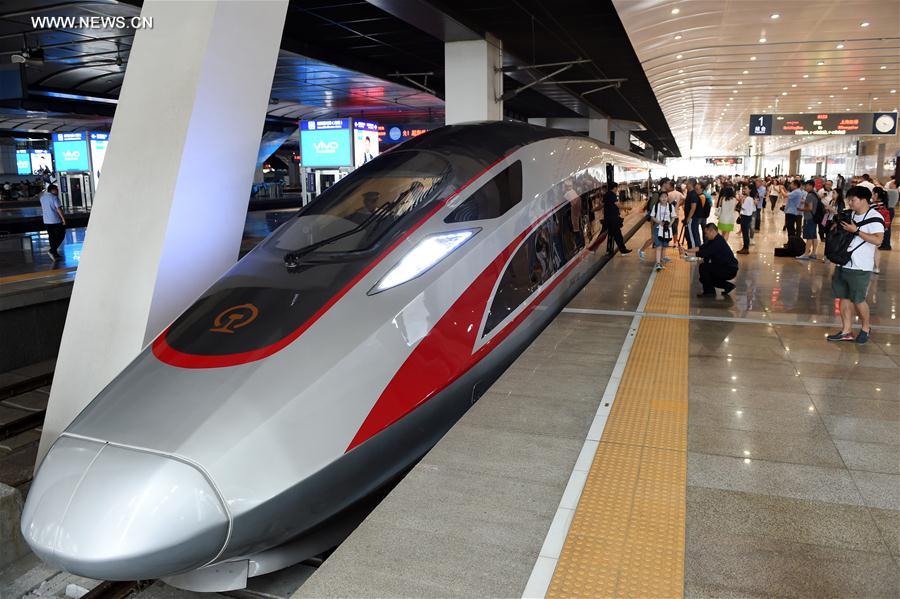China's high-speed rail through international eyes

Photo taken on June 26, 2017 shows the China's new bullet train "Fuxing" at Beijing South Railway Station in Beijing, capital of China. China's next generation bullet train "Fuxing" debuted on the Beijing-Shanghai line on Monday. A CR400AF model departed Beijing South Railway Station at 11:05 a.m. for Shanghai. At the same time, the CR400BF model left Shanghai Hongqiao Railway Station for Beijing. The new bullet trains, also known as electric multiple units (EMU), boast top speeds of 400 kilometers an hour and a consistent speed of 350 kilometers an hour.
In a recent poll of young people, China's High Speed Railways was voted the 'Chinese souvenir' they most wanted to take home.
China currently operates the largest bullet-train network in the world, and is rapidly expanding the service across the country
CRI's Wu Yifan discovered more about China's 'Age of the Train'
The survey was carried out among young people from countries involved in the China-inspired Belt and Road initiative, which brings together the peoples of Asia, Africa, the Middle East and Europe in economic and cultural cooperation.
The poll asked people to list "China Four Great New Inventions".
China's high-speed rail system was praised for its "High speed", "punctuality" and "convenience."
The young foreigners also admired the clean and bright carriages, shorter travelling times, and the ease of buying tickets.
Fifteen-year-old Italian, Marta Colonnello is an international student in Shanghai.
She's planning to travel throughout China during the summer vacation, and high-speed rail is her first choice.
"My classmates and I buy tickets online, and they are easy to handle. It's fun to take a high-speed rail. It won't waste a lot of time. It takes only five hours. I feel very comfortable. I feel lucky to on the train, since I can see a lot of scenery. I like to travel by rail."
Kudzai Felix Mawoneke, from Zimbabwe, is a student of Shanghai University School of Electrical Engineering.
He loves to travel and discover Chinese culture, and tries to travel every holiday.
For each trip he chooses to use the high-speed rail services.
"It's quite perfect; I don't know what to add to it. It's quite good. It's comfortable it's quick. The fastest maybe was 350kph, or 355 kph, I've been to Nan Jing, Shen Yang, Ji Ning. Inside the wechat, you can buy the train tickets and then just print them out at the station."
According to statistics, in 2016, a total of over 1.4 billion passengers were carried by China's high-speed rail.
That figure is close to the population of Africa and South America combined.
Szwejkowski Zbigniew is a senior from Poland, and was travelling by high-speed rail to Qingdao to attend a meeting.
He was amazed by China's great development and changes in the past half century.
"The network of trains is very nice for you, because you were able to do it in short time, you have to be proud, I congratulate you. We try to do the same, but we can't do it. The Chinese people are very hard-working, they can do things well. That's why they produce many good things for the world."
Today, high-speed rail has not only become the first choice for everyone to travel, but also become a prestigious national business card and a landmark in the new era.
In late June, two high-speed trains of a new model called Fuxing, came into operation on the Beijing-Shanghai line.
These new trains use core technologies developed in China and are built to a unified Chinese standard.

